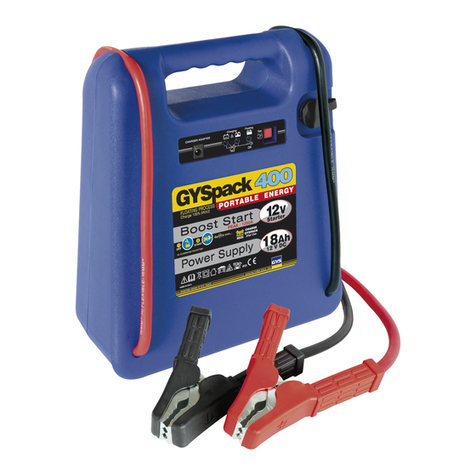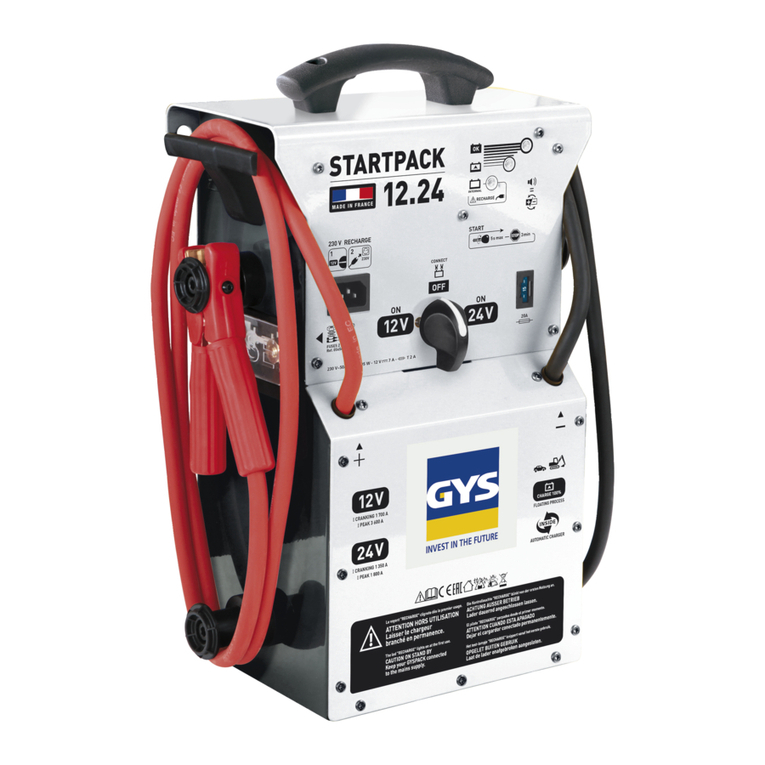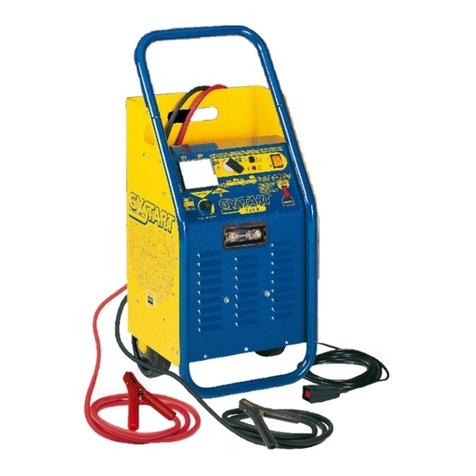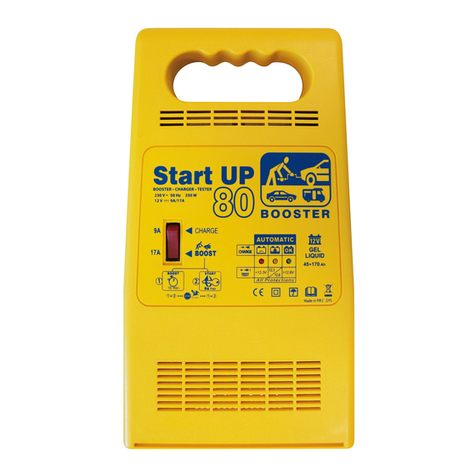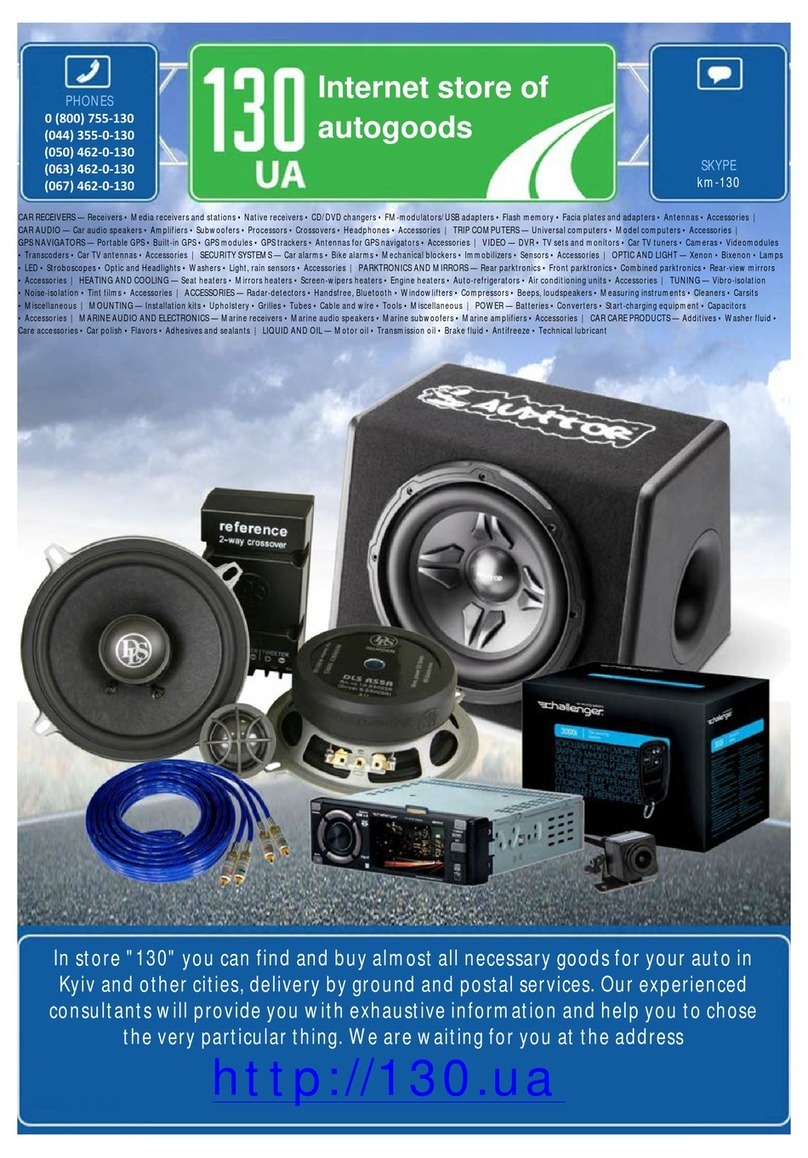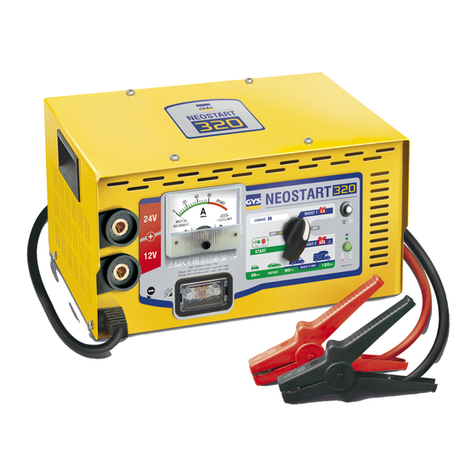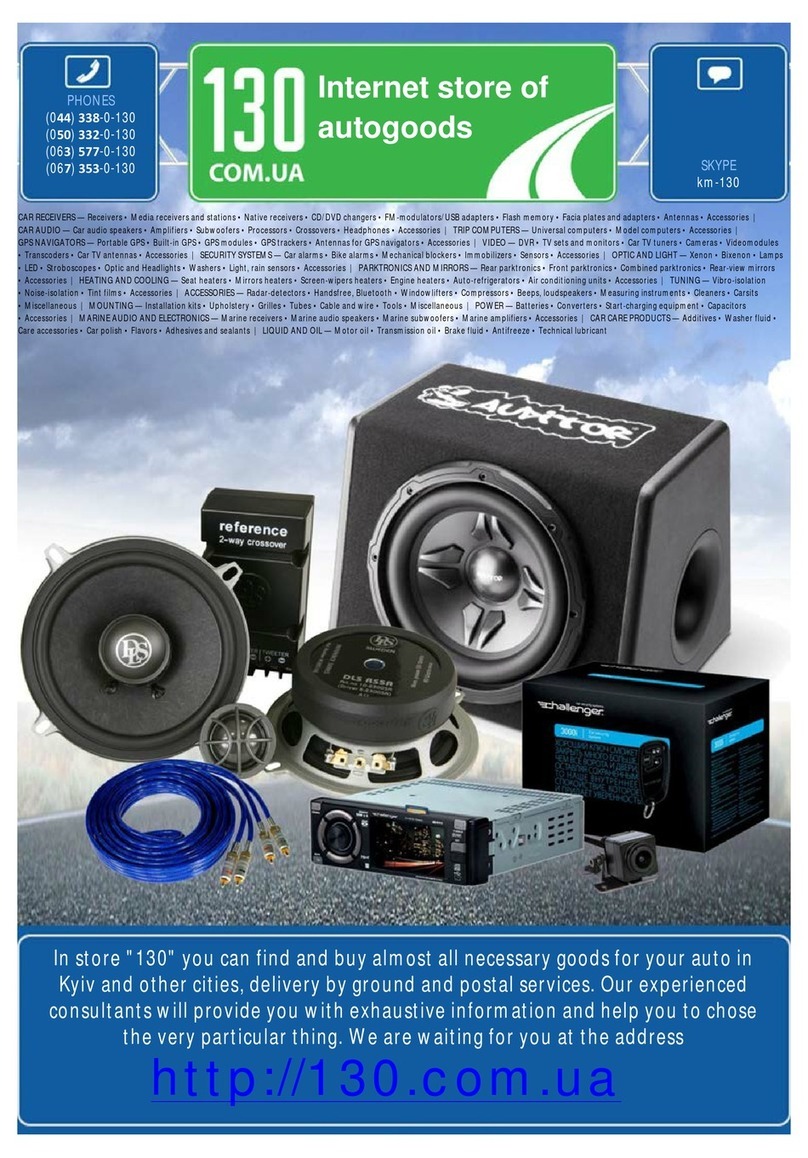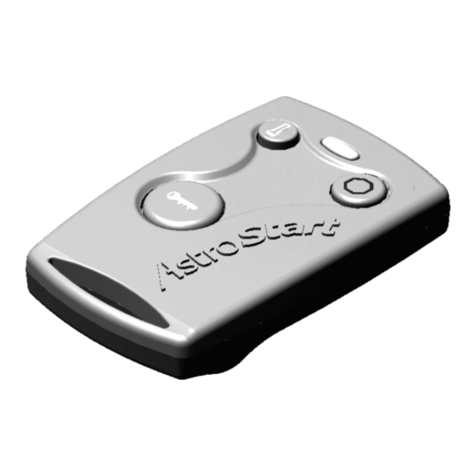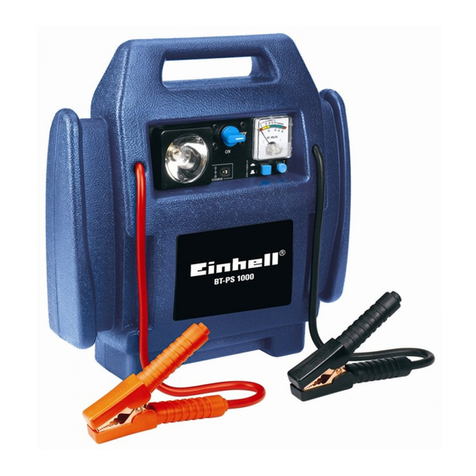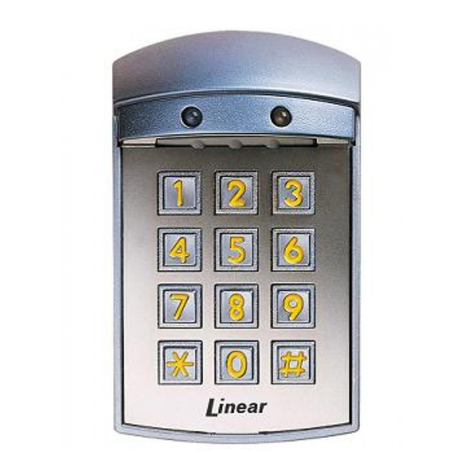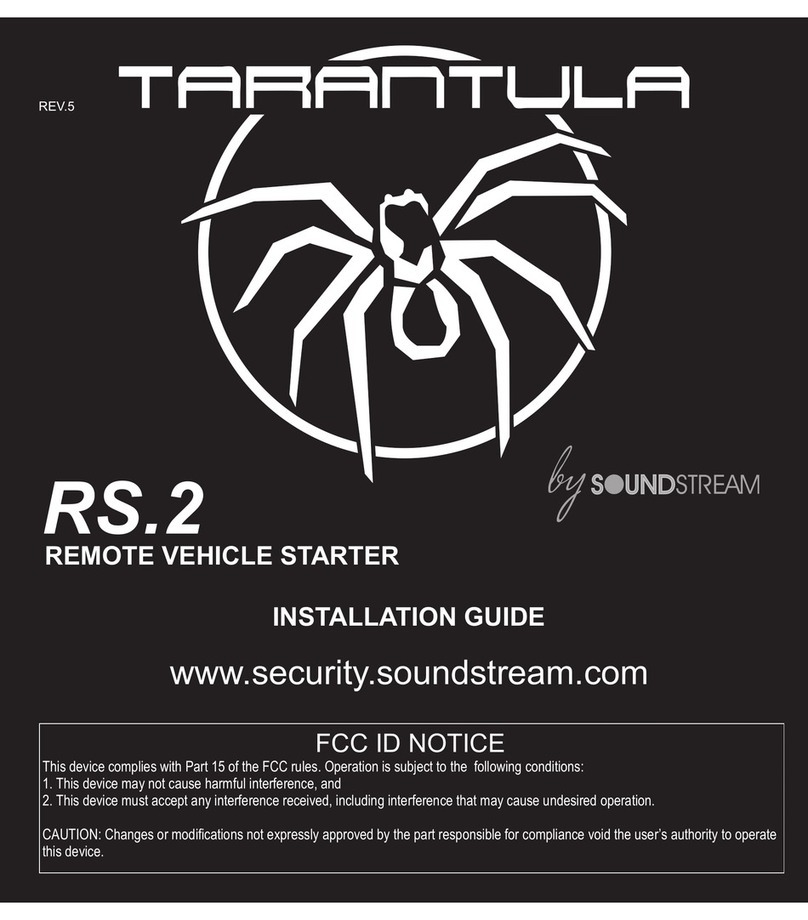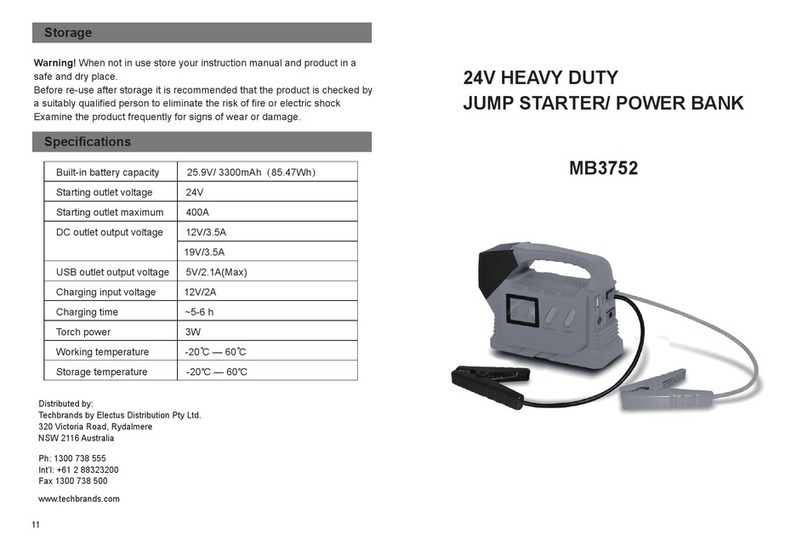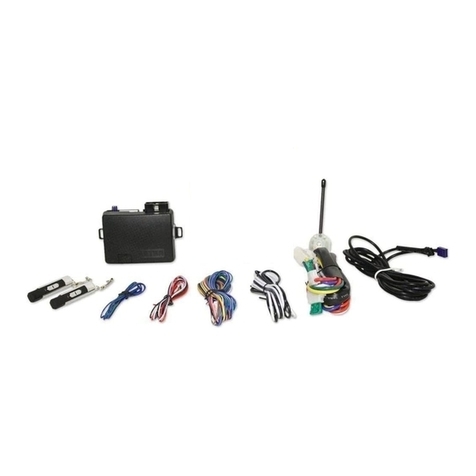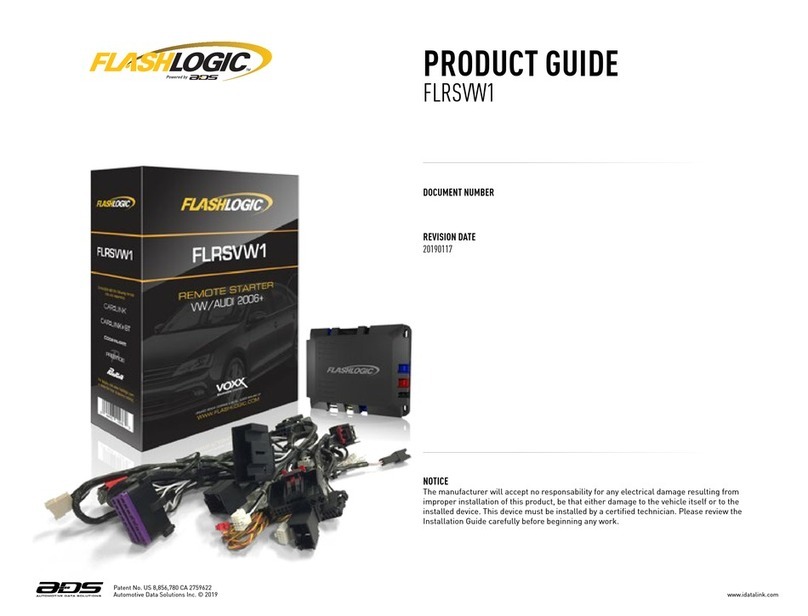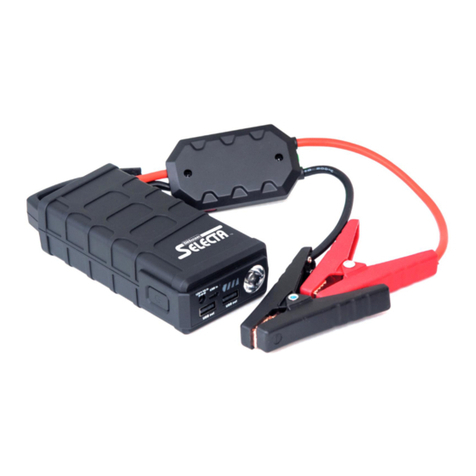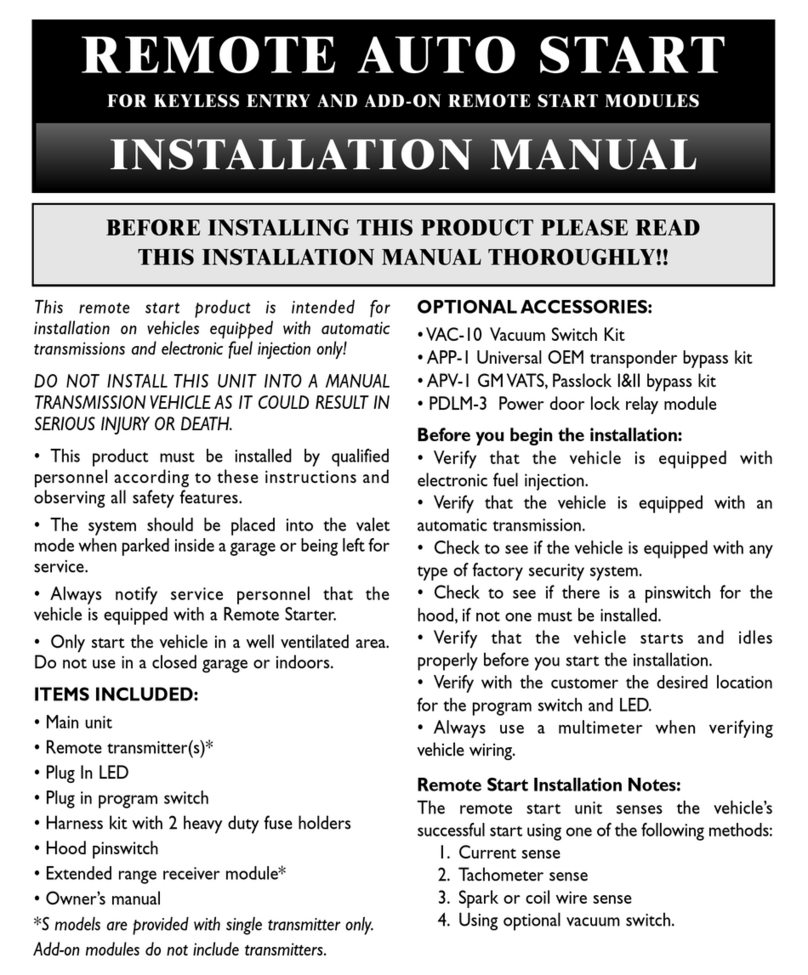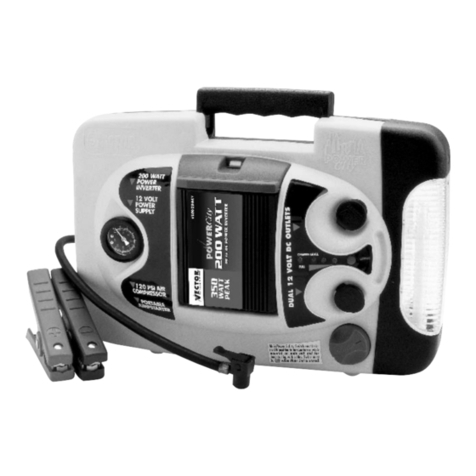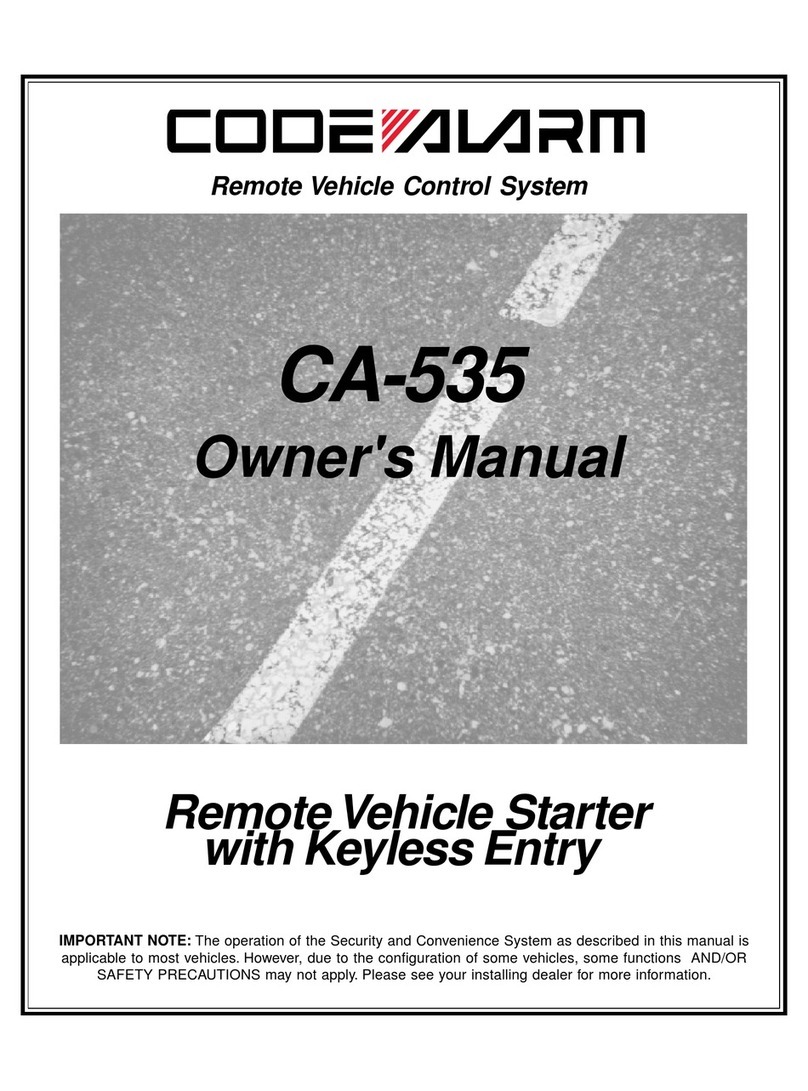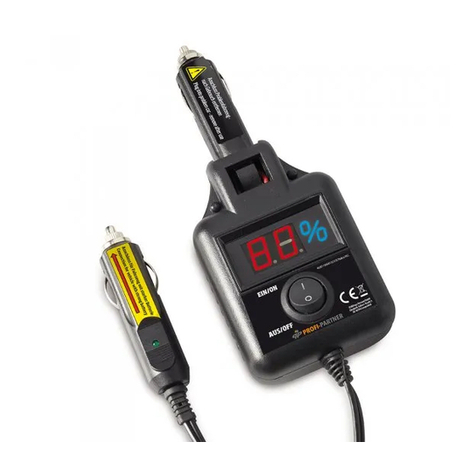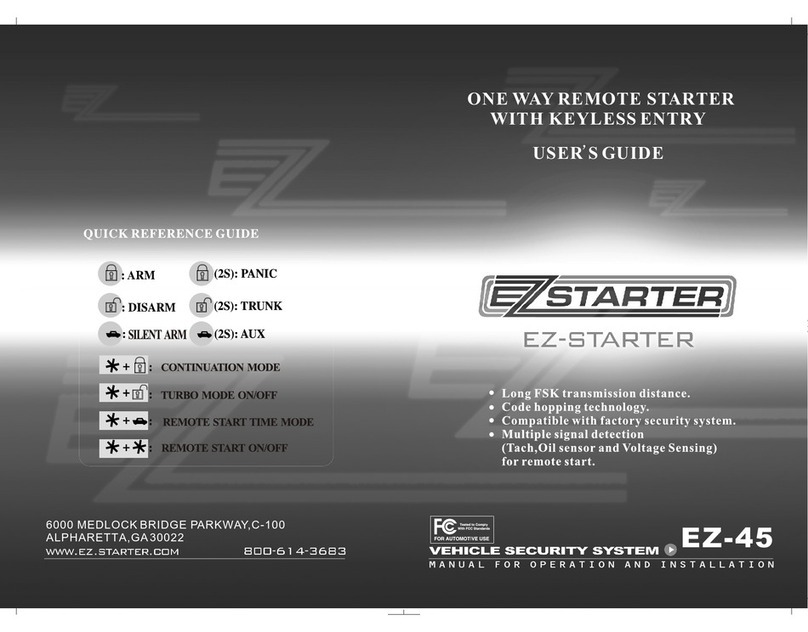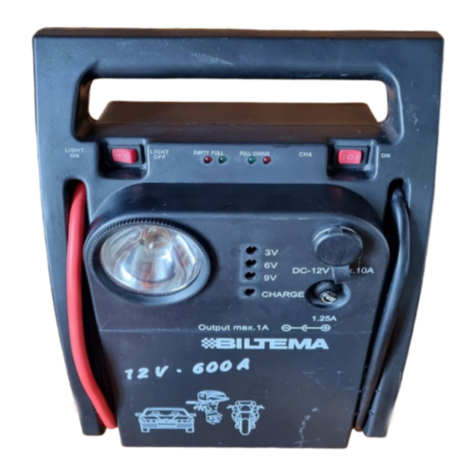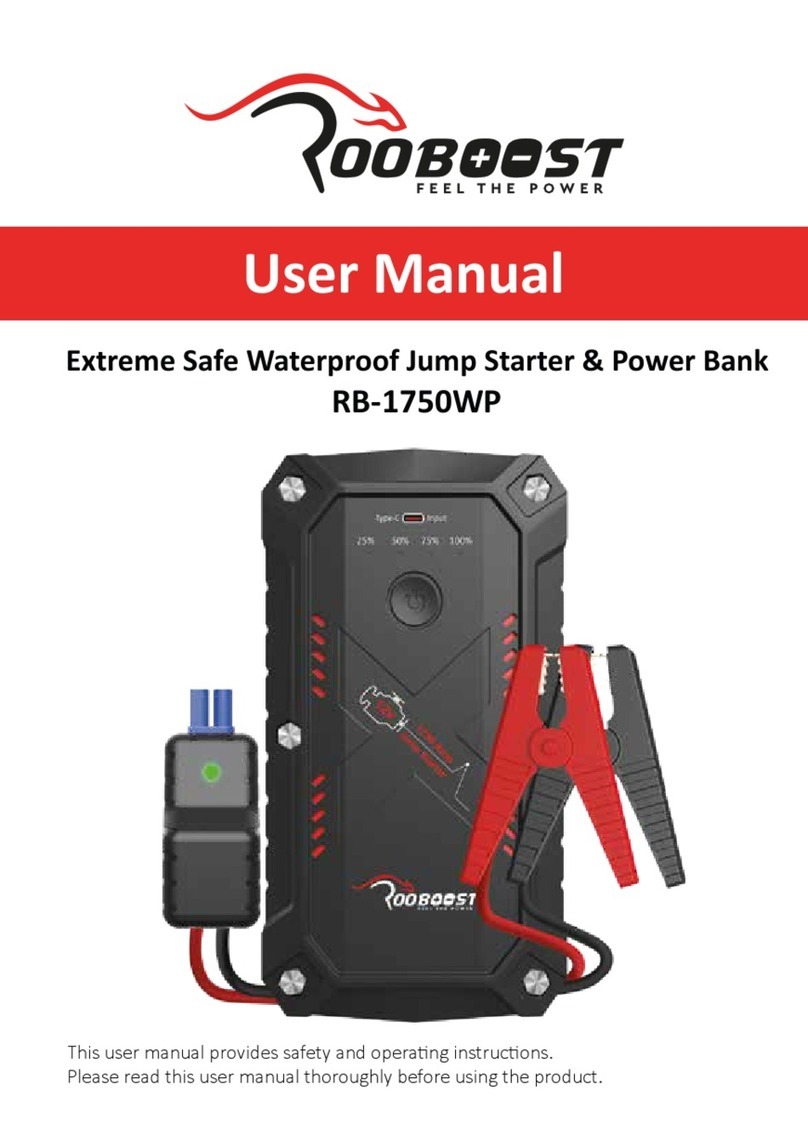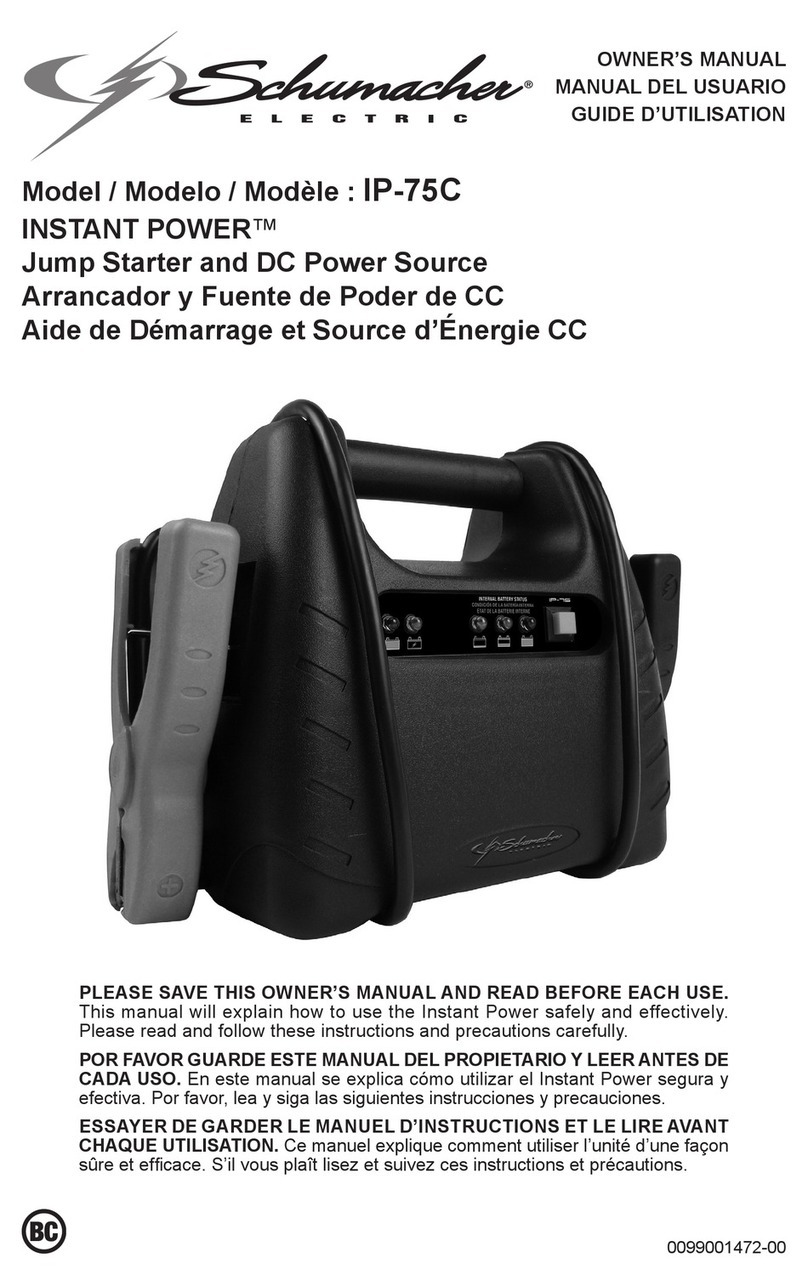
10
STARTIUM 330E / 480E / 680E / 980E FR
Notice originale
TEST DE L’ALTERNATEUR
Si la batterie du véhicule est régulièrement en panne, le problème peut provenir de l’alternateur.
Les STARTIUM disposent d’une fonction «test de l’alternateur» (p4, n°12). Elle permet d’afcher la capacité de charge
de l’alternateur en indiquant par intermittance la tension et le pourcentage.
Pour utiliser cette fonction le véhicule doit être en marche. Suivre les recommandations de branchement (p.6),
et choisir la fonction «Test de l’alternateur» sur l’interface.
Le pourcentage indiqué renseigne sur l’état de santé de l’alternateur :
Entre 0 et 100% Défaut de sous charge, la batterie n’est pas correctement rechargée.
A 100% Alternateur correct.
Entre 100% et 200% Défaut de surcharge.
PROTECTIONS
Ces appareils ont été conçus avec un maximum de protections :
• Les pinces de charge sont entièrement isolées.
• Un fusible assure la protection contre l’inversion de polarité et les courts-circuits. Le remplacement demande une
intervention manuelle.
STARTIUM 330E STARTIUM 480E / 680E STARTIUM 980E
FUSE
100A
FUSE
200A
FUSE
250A
• La protection thermique est assurée par un thermostat (refroidissement environ 1/4h). Le voyant de défaut s’allume
en cas de surchauffe, l’afcheur indique «th».
• En cas de défaut de l’appareil, une protection thermique supplémentaire coupe l’alimentation du générateur sans
indication pour l’utilisateur. Mettre l’appareil dans un local aéré et attendre 15 minutes.
• En cas de défaut secteur, l’appareil se met en protection, seule la LED de défaut s’allume et l’afcheur indique «dEF».
Si le défaut est trop important un fusible interne protège le poste. Ce fusible doit être remplacé par un technicien SAV.
ANOMALIES, CAUSES, REMÈDES
Anomalies Causes Remèdes
La LED error s’allume Problème d’alimentation secteur. Vérier votre alimentation secteur.
La LED error s’allume et le Buzzer sonne
Pinces en court-circuit ou inversion de polarité.
Vérier si les fusibles ne sont pas fondu.
Ne pas mettre les pinces en court-circuit.
Inverser les polarités.
La batterie que vous souhaitez charger est
défaillante.
Contrôler à l’aide d’un voltmètre la tension
à ses bornes. Si cette tension monte
instantanément à plus de 2,5V par élément la
batterie peut être sulfatée ou endommagée.
Erreur tension (12 -24 V) Vérier que la batterie est bien connectée en
12 ou 24V.
Batterie non présente ou <1V. Afchage : «BAt
HS»
Brancher une batterie.
Sélectionner TIMER si la batterie à une tension
<1V.
Suite à une utilisation intensive, votre appareil
s’est mis en coupure thermique. Afchage :
«th» Patientez 1/4h pour laisser l’appareil refroidir.
Aucune LED ne s’allume
Défaut d’alimentation important Vérier votre alimentation.
Surchauffe du générateur, la protection
thermique «th» s’enclenche. Aérer le local.
Le bouton marche/arrêt n’est pas enclenché. Enclencher le bouton marche/arrêt.
En mode START ENGINE, si l’afcheur indique
0%. Le démarrage est impossible.
La batterie est sulfatée, le démarrage est
empêché an de protéger l’électronique
embarquée du véhicule.
Effectuer une recharge de la batterie avant de
relancer un START ENGINE.
La batterie bouillonne.
La sélection de tension 12 ou 24V n’est pas
correcte. Vérier la tension de votre batterie et la
brancher correctement.
La batterie a des éléments en court-circuit. La batterie est irrécupérable, elle doit être
changée.
Étincelles aux pinces Inversion de polarité Brancher les pinces dans le bon sens (+/+;-/-)
Mode timer actif Cf. Raccordement et débranchement




